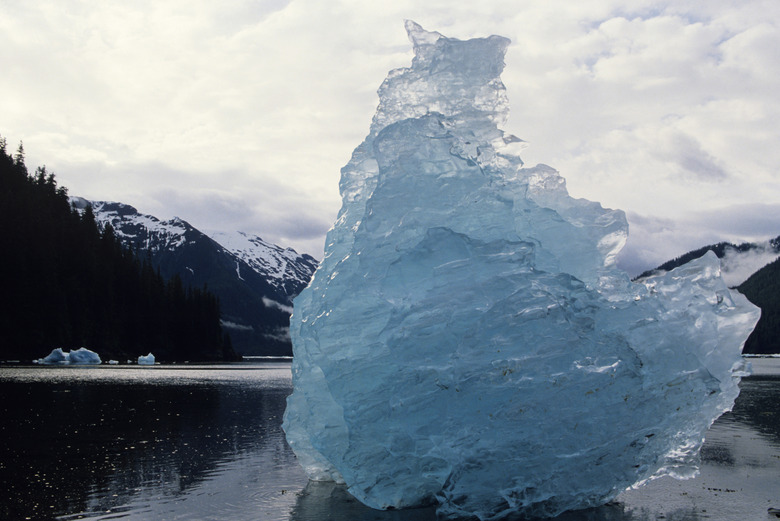What Is Glacial Till?
Most children and adults know the essence of what a glacier is: a very large, often beautiful, and – especially in the case of the Titanic, famously sunk by colliding with a glacier in 1912 – potentially hazardous chunk of ice. But precisely how glaciers form, why they form where they do and the effects they have on their natural surroundings are far more intricate and captivating matters. How glacial tills are created by nature is one such topic.
Glaciers and the Earth
Glaciers and the Earth
Glaciers are not merely large masses of ice; they are moving masses of ice, and in this sense are like frozen rivers, albeit very slowly flowing ones. Because they ultimately melt and disappear, the effect of the Earth on glaciers is limited in time and impact, but the effect of glaciers on the Earth is profound and virtually everlasting. Glacial movements sculpt mountains, carve out valleys and carry tremendous amounts of rock and sediment great distances.
Glacier Material
Glacier Material
Glacial drift refers not to the movement of a glacier, but to the material transported by one. Most of this is left behind by retreating (melting) glaciers; when a glacier is advancing, the material it leaves is largely swept up by further advances and the retreat. Glacial till is a catch-all term of sorts, referring to material that is not found in layers and that consists of various materials of various sizes. Outwash is water-transported material found in layers, mostly sand and stones. Ice-contact material may be stratified or unstratified, and it consists mainly of gravel and sand.
Glacial Landforms
Glacial Landforms
Glacial till is considered a type of glacial landform. Other landforms include various kinds of valleys; cirques; horns; aretes; moraines, which are accumulations of till; erratics; glacial striations; paternoster lakes; kames, which are mound-like hills; kettles, which are rounded basins; drumlins; outwash plains, found at lower elevations, sometimes containing till, and often mingling with moraines; and eskers, which are long and narrow ice-contact ridges.
Glacial Till in Depth
Glacial Till in Depth
As someone to define "till," and you'll get a number of overlapping answers. One "till" definition in geology and science is, as the National Park Service puts it, "the sediment deposited by a glacier." Till is found in all glacial environments. It may include clay, and it typically features rocks ranging from barely larger than sand grains to sizable boulders. Till is ultimately re-arranged by rivers, leaving no organized patterns of stratification. Pieces of rock that have been especially affected by glacial ice are often sharp-edged or irregularly shaped pebbles and cobbles. Till runs seamlessly into moraines, and in fact sometimes forms entire moraines.
Cite This Article
MLA
Beck, Kevin. "What Is Glacial Till?" sciencing.com, https://www.sciencing.com/glacial-till-6901178/. 28 September 2018.
APA
Beck, Kevin. (2018, September 28). What Is Glacial Till?. sciencing.com. Retrieved from https://www.sciencing.com/glacial-till-6901178/
Chicago
Beck, Kevin. What Is Glacial Till? last modified March 24, 2022. https://www.sciencing.com/glacial-till-6901178/
